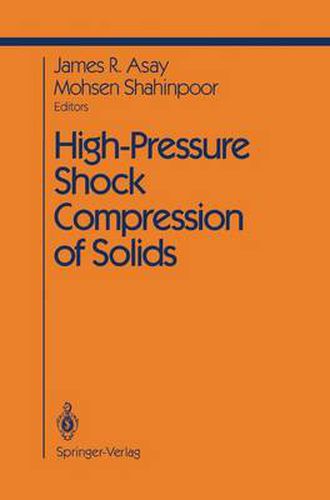Readings Newsletter
Become a Readings Member to make your shopping experience even easier.
Sign in or sign up for free!
You’re not far away from qualifying for FREE standard shipping within Australia
You’ve qualified for FREE standard shipping within Australia
The cart is loading…






This title is printed to order. This book may have been self-published. If so, we cannot guarantee the quality of the content. In the main most books will have gone through the editing process however some may not. We therefore suggest that you be aware of this before ordering this book. If in doubt check either the author or publisher’s details as we are unable to accept any returns unless they are faulty. Please contact us if you have any questions.
This book presents a set of basic understandings of the behavior and response of solids to propagating shock waves. The propagation of shock waves in a solid body is accompanied by large compressions, decompression, and shear. Thus, the shear strength of solids and any inelastic response due to shock wave propagation is of the utmost importance. Furthermore, shock compres sion of solids is always accompanied by heating, and the rise of local tempera ture which may be due to both compression and dissipation. For many solids, under a certain range of impact pressures, a two-wave structure arises such that the first wave, called the elastic prescursor, travels with the speed of sound; and the second wave, called a plastic shock wave, travels at a slower speed. Shock-wave loading of solids is normally accomplished by either projectile impact, such as produced by guns or by explosives. The shock heating and compression of solids covers a wide range of temperatures and densities. For example, the temperature may be as high as a few electron volts (1 eV = 11,500 K) for very strong shocks and the densification may be as high as four times the normal density.
$9.00 standard shipping within Australia
FREE standard shipping within Australia for orders over $100.00
Express & International shipping calculated at checkout
Stock availability can be subject to change without notice. We recommend calling the shop or contacting our online team to check availability of low stock items. Please see our Shopping Online page for more details.
This title is printed to order. This book may have been self-published. If so, we cannot guarantee the quality of the content. In the main most books will have gone through the editing process however some may not. We therefore suggest that you be aware of this before ordering this book. If in doubt check either the author or publisher’s details as we are unable to accept any returns unless they are faulty. Please contact us if you have any questions.
This book presents a set of basic understandings of the behavior and response of solids to propagating shock waves. The propagation of shock waves in a solid body is accompanied by large compressions, decompression, and shear. Thus, the shear strength of solids and any inelastic response due to shock wave propagation is of the utmost importance. Furthermore, shock compres sion of solids is always accompanied by heating, and the rise of local tempera ture which may be due to both compression and dissipation. For many solids, under a certain range of impact pressures, a two-wave structure arises such that the first wave, called the elastic prescursor, travels with the speed of sound; and the second wave, called a plastic shock wave, travels at a slower speed. Shock-wave loading of solids is normally accomplished by either projectile impact, such as produced by guns or by explosives. The shock heating and compression of solids covers a wide range of temperatures and densities. For example, the temperature may be as high as a few electron volts (1 eV = 11,500 K) for very strong shocks and the densification may be as high as four times the normal density.